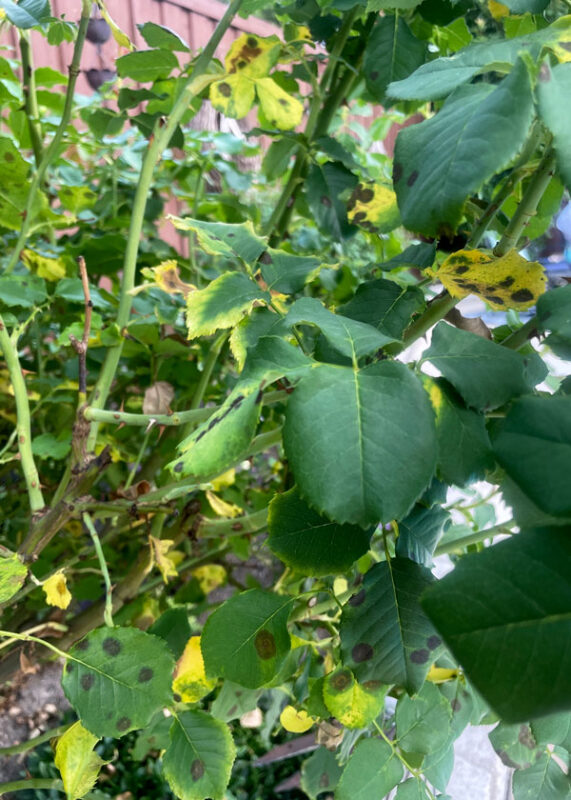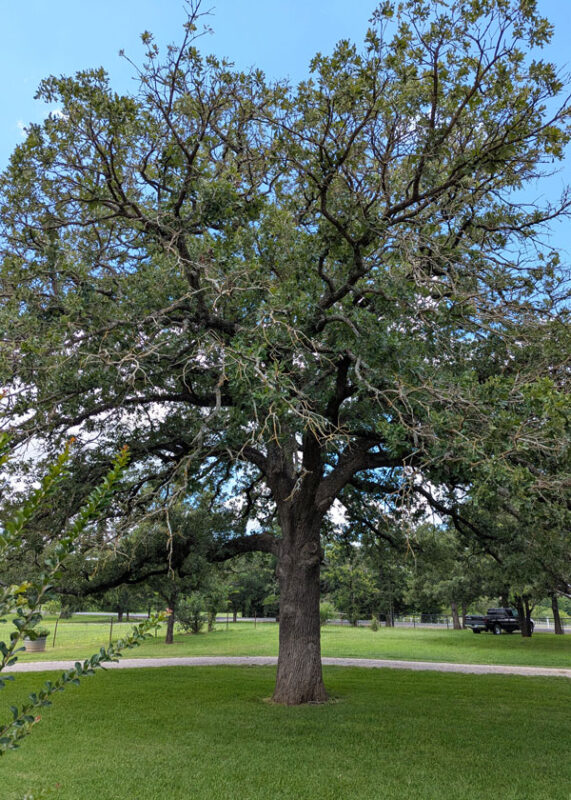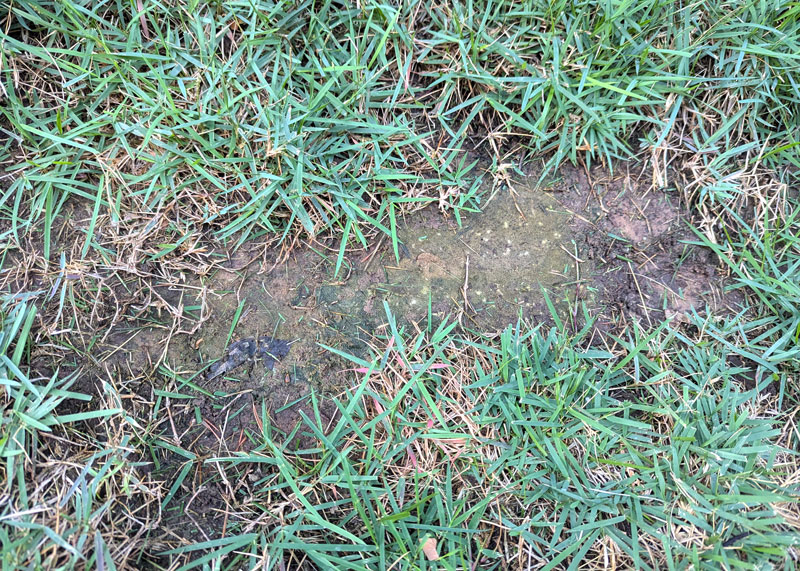Q&A – Ask Neil: July 17, 2025
(Please read these instructions carefully.)
Before you post your question, please look at recent issues to see if someone else has already asked it. You might find your answer there.
How to submit your question…
(Note: You may need to allow a pop-up window to come up in order to get the link for sending your photo(s). If you have already submitted your question and didn’t see the pop-up window, please click here.)
• Click the link provided below to post your question. After you submit your question, a new window will pop up giving you the address to which you can e-mail a SHARP, HIGH-RESOLUTION PHOTO to accompany your question. Please DO NOT SEND THUMBNAIL PHOTOS in case I need to zoom in to see things.
• Click here to post your question.
• Please ONLY POST YOUR QUESTION ONE TIME. We can only accept a set number of questions each week, and when we get duplicates it costs other people their chances.
• One question per reader, please.
• Please use this only for posting questions – not for standard emails.
• Watch for your answer in the following week’s e-gardens.
• I choose those of greatest general interest. For example, plant IDs seldom make the cut.
• I must have your first name or initials.
• I must have your city or county. (Texas is a very large state.)
Important favor: I’ve been covered up so far this year with questions about live oaks losing chunks of bark. Rather than continuing to answer the same questions weekly, I’d ask that you look back to previous issues. You’ll find several replies that I’ve posted. Thanks!
QUESTION 1: WHAT IS THE BEST TREATMENT FOR BLACK SPOT?
Question: What is the best treatment for black spot on rose bushes? Siebrigie B., Plano.
Answer: Your photo is text-book perfect for black spot. It seems like 5 years since I’ve been asked about this centuries-old nemesis of roses (compared to the current crisis, rose rosette virus). Black spot should abate as the weather turns hot and dry now that we’re into the summer. Keeping water off the foliage helps, so set sprinklers so that they won’t run in the evenings, and direct their sprays down onto the soil. There are several good fungicides labeled for control of black spot. Rotate them if necessary and apply them in early morning so they will dry before the sun’s rays hit the foliage. Your independent retail garden center nursery professional will be able to show you several choices. If you ever decide to replant, go with Texas A&M Earth-Kind® selections that have been tried and proven in their tests. Hats off to my friend Dr. Steve George for getting the ball rolling years ago on this Herculean study.
QUESTION 2: IS MY POST OAK DYING?
Question: My post oak has many branches that have no leaves. It has always been beautiful. Its circumference is 104 inches. Is it dying? Cathy A., Ft. Worth.
Answer: What a lovely setting! It’s difficult to tell from just the one (excellent) photo. Its canopy does appear to be thinner than it ought to be. That might suggest that one would want to fertilize it to get it to thicken up, but that’s a frightening thing to do with post oaks. They seem to hate any human involvement with their normal lives. Do I see a black streak in the bark extending down the trunk 10 or 12 ft. up? That could suggest a problem. I really would suggest getting a certified arborist on site to look at it, perhaps semi-annually to monitor its condition. Take photos each year on the same date to monitor any changes, for better or worse. It’s not uncommon for post oaks, like pecans, to have dead branches within their canopies. The bad news is that post oaks also have a habit of dying rather suddenly, often without much warning. That’s where the certified arborist will have an idea of what to watch for. Our advertiser here in e-gardens, Arborilogical Services, does serve your area. If you do not have someone already working with you, they are outstanding.
QUESTION 3: HOW DO I DEAL WITH MOSS?
Question: I’m in a garden home, and the side yard gets little sun. I resodded with zoysia after putting in a French drain. Sprinklers between the houses overlap and it has gotten too much water. Now it has moss growing on top of the soil. I’m adjusting the sprinklers. How do I deal with the soil? Erin H., Keller.
Answer: Let the summer heat and low humidity, plus any sun that does hit it take care of it for you. Here’s hoping the area gets 6 or 7 hours of sunlight daily. That’s what the zoysia will need. St. Augustine is actually a bit more tolerant of shade, although it, too, needs sunlight. And it will have problems if the area stays wet. But the main problem isn’t the moss. It’s going to be the excess moisture, and it sounds like you’re already taking steps to address that. (And my mind keeps drifting back to your words, “…gets little light.” That may be the biggest issue.)
QUESTION 4: WHAT IS WRONG WITH MY LIVE OAK?
Question: One arborist suggested my live oak has been hit by anthracnose. I’m wondering if you concur? Steve M., McKinney.
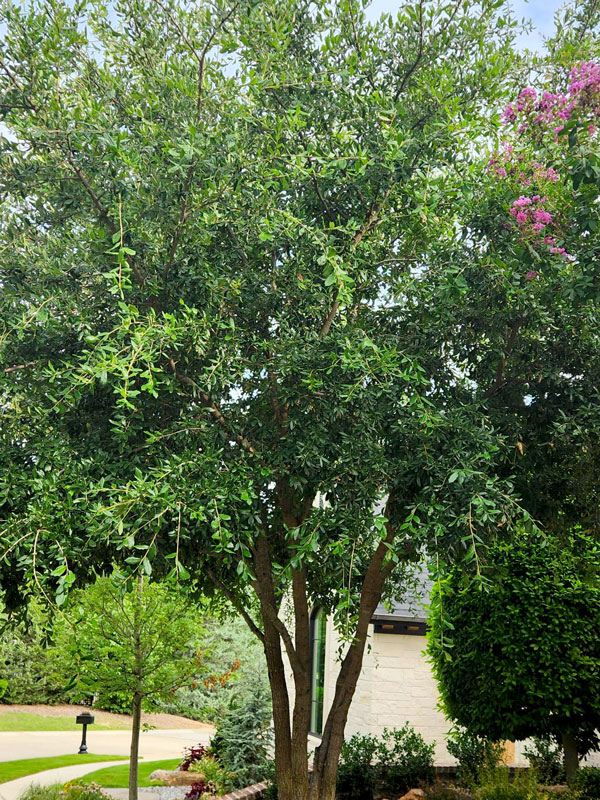
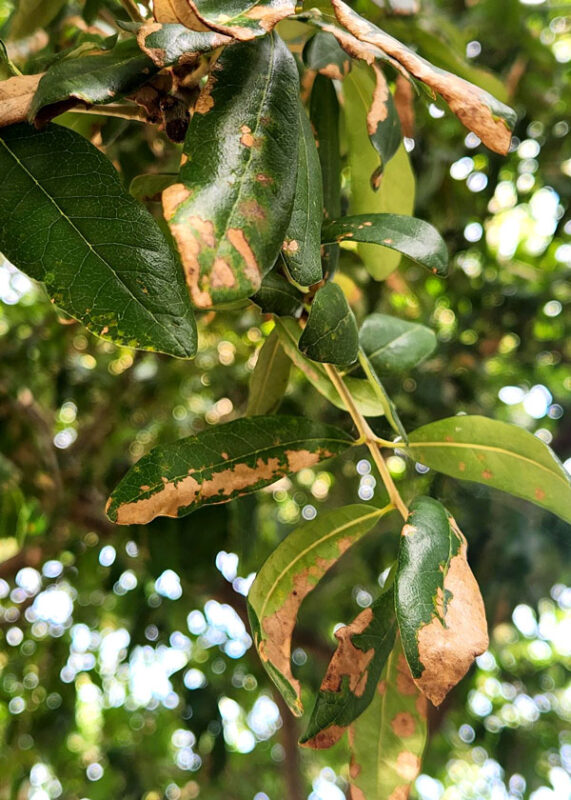
Images clickable for a larger view.
Answer: It certainly could be. The symptoms look right. It’s interesting how little of the tree overall seems to be impacted based on your photo of the entire tree. The sure way to know would be to send a sample to the Texas A&M Plant Disease Diagnostic Clinic in College Station and ask that they culture it for any pathogen. You would want more than just a leaf sample. Twig tissues would also be needed. They would, I assume, also want to rule out oak wilt fungus. There is a fee for their services. You might want to ask what your certified arborist would suggest before you go to all that expense. Hopefully you have one who looks after your trees at least semi-annually.
QUESTION 5: WHAT IS GOING ON WITH MY NEW ZOYSIA TURF?
Question: I had zoysia sod planted in April. Initially it was nice and green, but now it looks like this. The company that mows my yard says it’s been burned by too much nitrogen and needs iron, but the company that put the fertilizer down says it’s too wet. Can you help me figure things out? Charles T., Wylie.
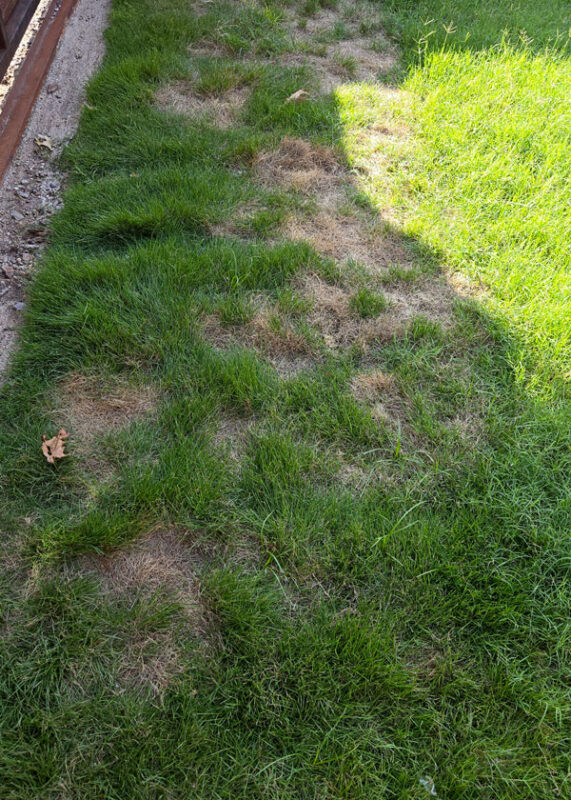
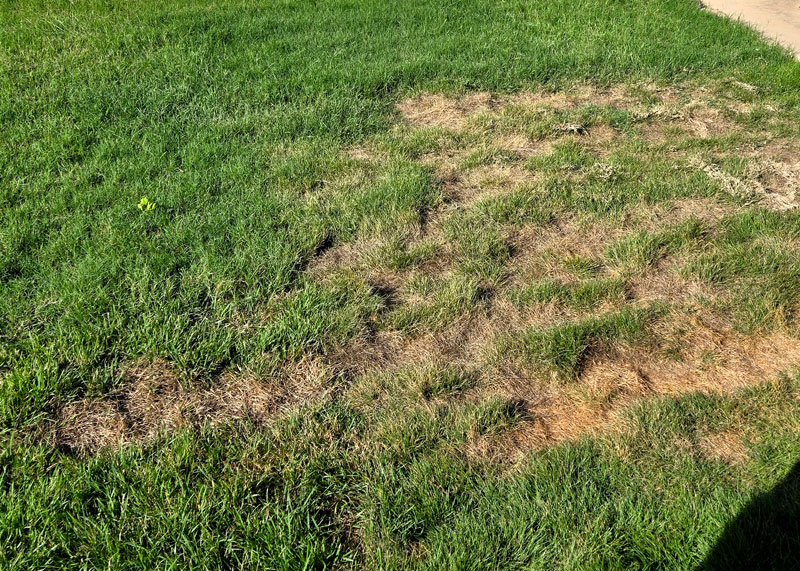
Images clickable for a larger view.
Answer: The old “other guy’s fault” finger pointing. And I don’t think it’s either. This is almost assuredly large patch fungus (Rhizoctonia solani) – out of the brown patch fungus group so familiar to us with St. Augustine turf in the fall. It should go away (not spread) now that it’s hot and dry. Water only in the mornings so the grass won’t be wet at night. Apply a fungicide labeled for control of patch turf diseases. Azoxystrobin and Myclobutanil are two common ones. It looks like you might need to have your mowing company stop by a little more often. Perhaps the photos were taken just before the lawn was mowed. I’m seeing bermuda getting a start as an invader. That may cause you problems on down the road.
QUESTION 6: HOW DO I CONVERT A LARGE LIRIOPE BED TO ASIAN JASMINE OR WINTERCREEPER?
Question: I have a 30 x 40 ft. bed of liriope groundcover that I’d like to convert to Asian jasmine. What should I use to kill the liriope and what month should I use it? If I were to use purple wintercreeper instead, does it complement Asian jasmine in nearby beds? Jim O., Arlington.
Answer: Don’t try to use a herbicide to kill the liriope. You would still have all that dead stubble to remove by hand, and it’s much easier to dig and remove while it’s still green.
Better yet, why don’t you ask around to see if someone could use it. Trade the plants for the labor of digging and moving it. That can be done at any time. Then you would be ready to rototill the bed, rake out any remaining liriope, and incorporate several inches of organic matter to provide the best possible planting bed for your new groundcover.
Yes, wintercreeper would be fully compatible with Asian jasmine if the two were kept completely separated. Both will try to sprawl into the other’s territory. The reason so many professional landscapers in North Texas are switching to wintercreeper is because it holds up so well to the winter cold spells. While Asian jasmine turns brown every couple of winters in the northern half of the state, purple wintercreeper goes on unaffected. It’s my groundcover of choice for all future plantings in our landscape in McKinney.
In fairness, for our readers in South Texas, I did notice how attractive the jasmine beds were in Houston last week while we were there. It takes me back to my days as a teenager doing landscapes when Asian jasmine was just coming into the marketplace. Everyone was so excited to have it. It looked great then, and, in South Texas, it still looks great today.

